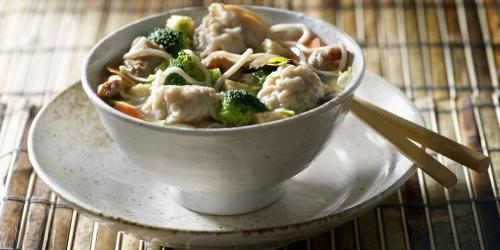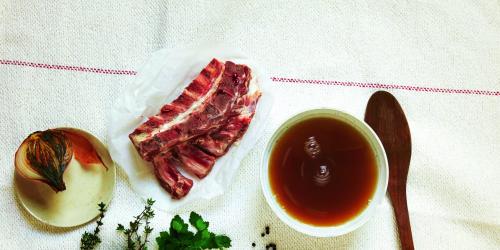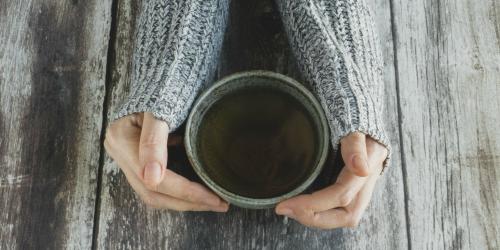Algae, primitive plants, the first ones appeared on our planet more than five hundred million years ago, concentrate all the richness of the ocean .
However, despite the fashion of Asian cuisine, particularly Japanese, which accommodates them in all its forms, seaweeds remain largely unknown in France. "However, more and more restaurateurs are using them," says Hélène Marfaing, agro-food project manager at the Center for the Study and Recovery of Algae (Ceva).
And we now find in the shelves of many super markets. That's good, because, far from being mere culinary curiosities, these vegetables of the sea prove to be formidable health food.
Vegetables low in fat and packed with nutrients
Poor in calories (30 to 45 kcal / 100 g depending on the variety), they are packed with essential nutrients, much more than the vast majority of terrestrial plants.
Starting with their protein content, extremely interesting. Some varieties such as nori (or Porphyra), red alga compressed in leaves with which are made the famous makis, contain more than 45%. More than soy, eggs and even beef!
And, since they deliver all the amino acids essential to the proper functioning of the body, these proteins are ideal to avoid deficiencies among vegetarian diet enthusiasts. In contrast to meat, algae also provide little bad saturated fat and provide many good polyunsaturated fatty acids, especially long-chain omega-3s (EPA and DHA), beneficial to the cardiovascular system.
A British study published in January 2012 in The Journal of Nutrition has also shown that their omega 3 were more effective at regulating cholesterol and blood pressure than short-chain other plants.
"Their effects seem similar to the DHA contained in oily fish," says Adam Bernstein, coordinator of the study. Algae are also abundant in vitamins (especially B and C) and minerals.
"One hundred grams cover about 300% of our daily iron needs and 500% of our calcium needs," says dietitian Thérèse Ellul Ferrari, author of Hundred Twenty Gourmet Recipes for your digestive comfort (Grancher edition). Of course, each species has its specificities.
To counter anemia, it is better for example to consume ulva (or sea lettuce): it contains 80 mg of iron on average per 100 g of dry matter, twelve times more than lentils.
And, to fill up with calcium, instead bet on wakame (or Undaria) and kombu (or laminar): these two champions contain respectively 1070 mg and 820 mg / 100 g, according to the Ceva, more than double that the Camembert or the blue of Auvergne! An interesting substitute for dairy products.
A natural source of magnesium
All varieties also bring a plethora of copper, manganese, zinc, as well as iodine, essential for the good health of the thyroid. They also prove to be an extraordinary magnesium mine: "2,790 mg / 100 g for ulva, 1,590 mg for sea beans, 1,250 mg for wakame," says Régine Quéva, author of Magnesium, Algae and Algae. health (Grancher ed.). By way of comparison, wheat germ (so-called) contains only 250 mg / 100 g.
A boon to the extent that 70% of us suffer from a magnesium deficiency, likely to be a source of stress, sleep disorders, insomnia, sugar cravings, night cramps, headaches, even chronic constipation.
But algae are also distinguished by their high content of antioxidants , some of which, such as fucoxanthin or fucoidan, can not be found elsewhere.
These extraordinary substances not only protect against the production of free radicals involved in the aging of cells, but they also help reduce the risk of serious diseases such as cancer.
Mostly present in brown algae (mainly wakame and kombu), these antioxidants act on two levels: they slow the proliferation of malignant cells by exerting a poison effect against them and they stimulate the immune system so as to implement a better strategy defense against the development of tumors. These simultaneous actions have been demonstrated both in animals and laboratory-grown human cells derived from breast cancer, prostate cancer or skin cancer.
Other antioxidants specific to algae would block the activity of enzymes involved in the digestion of carbohydrates, which prevents the occurrence of sudden peak blood sugar levels so, eventually, the onset of diabetes. The algae are all good. Except in cases of intolerance to iodine or inflammatory bowel disease.
Eat seaweed for better morale
Eating algae has a positive impact on our physical health, but also on our psychological well-being. These superfoods indeed contain large quantities of carotenoids, a family of orange-yellow pigments that give their pretty characteristic color to carrots and pumpkins.
As surprising as it may be, kombu contains 70 micrograms per 100 grams and nori 3 121 micrograms, or 149% of the recommended dietary intakes! However, according to an American study published last January by researchers at the Harvard School of Public Health in the journal Psychosomatic Medicine, carotenoids help us to see life in pink.
The more we eat, the more we are in a perky mood. As proof: every time our blood carotenoid concentration increases from 3 to 13%, our optimism rises by one point (on a scale that counts five). It would be a shame to deprive oneself of it.
How to cook seaweed easily?
The easiest way to start is to buy them in glitter (in supermarkets, Asian grocery stores and organic stores) and use them as spices.
Sprinkled on a salad, an omelette or a pan of vegetables at the end of cooking, it is a delight. Ready-to-use seaweed tartars, sold in the dietary rays, go well with pasta and rice.
You can also spread toast or garnish potatoes with. Whole seaweed, fresh or dried, must be desalinated before use. But do not let them soak overnight like cod. Rinsing for a few minutes with clear water is enough.
Ulva and dulse can be eaten in raw vegetables or simmered in foil with fish. More fleshy, wakame and kombu are excellent to enhance the flavor of a soup (in thin strips) or decorate a meat sauce (cook with).
The sea bean is tasty fried, alone or mixed with vegetables. And the nori leaf can not only wrap maki but also form nice cornets for original appetizer appetizers.



